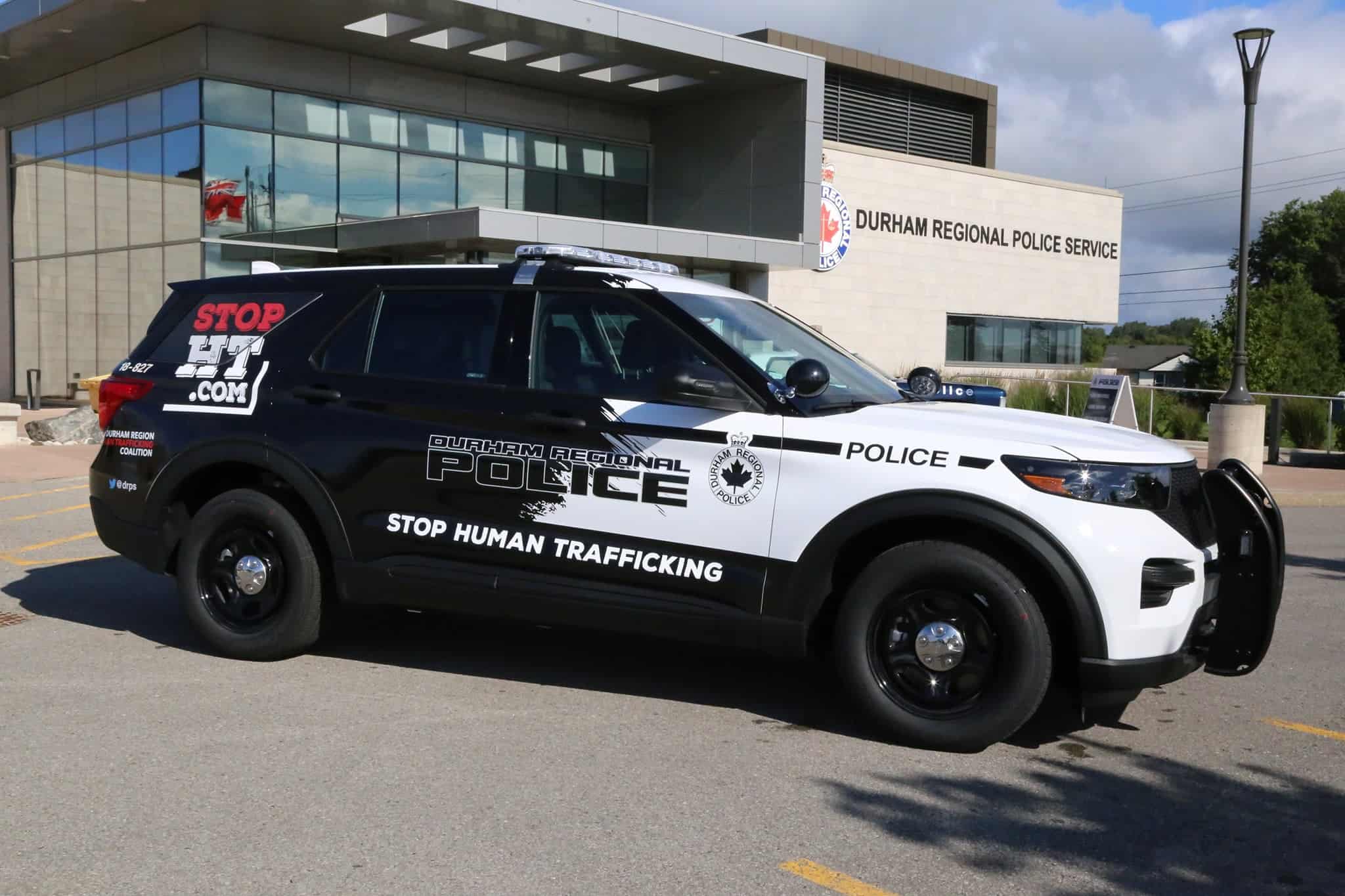Nearly 300 human trafficking investigations reported last year from Oshawa to Pickering
Published February 22, 2024 at 12:32 pm

Durham Regional Police are spreading awareness of human trafficking and have reported nearly 300 related incidents in 2023.
Feb. 22 is Human Trafficking Awareness Day in Canada, which prompted Durham police to set up booths at the Oshawa Centre and release information about the crime in the region.
They said they investigated 289 human trafficking cases in Durham last year. Their partners in Victim’s Services helped 235 victims “either due to their involvement in human trafficking or their risk of becoming involved in human trafficking-related activity.” Of these, 120 were minors.
In total, 183 charges were filed against 81 suspects. This represents a four per cent increase in both cases and victims over 2022.
In one of the year’s most dramatic stings, the Human Trafficking Unit posted a fake online ad for sex with minors as part of their ongoing Operation Firebird. The ad received more than 6,600 clicks in four days. The sting resulted in five arrests including;
- Sarangan Kirupamoorthy, 28 of Whitby
- Rajasekaran Natarajan, 38 of Clarington
- Mahbubar Rahman, 48 of Pickering
- Rajwant Singh, 30 of Belleville
- Krish Subiah, 37 of Clarington
The Human Trafficking Unit has operated such investigations since its 2018 founding. Case rates have steadily risen, jumping 94 per cent by 2019 and a 14 per cent jump by 2020.
In 2021, 251 cases were under investigation by September alone, a 161 per cent increase, resulting in 143 charges against 149 suspects, with 226 victims identified. At the time, Deputy Chief Dean Bertrim said “This upward trend is alarming and illustrates that much work and effort is still required.” Two years later cases continue to increase.
Police define human trafficking as “the control and use of threats or violence to exploit another for financial gain.” This can include psychological manipulation, emotional abuse, lies, threats, violence and isolation, control of someone’s money or identification, or pressuring someone to have sex for money.
Investigators note human trafficking is often conflated with smuggling or kidnapping, but stressed victims need not be moved to constitute a human trafficking case.
“Victims are typically coerced by someone they perceive as an intimate partner or friend,” police said in describing the four stages of human trafficking. In the first, the trafficker chooses a victim and then, in the second establishes a relationship of trust with the victim. Often the second stage is accompanied by gifts and paying special attention.
Once trust is won, the third stage begins wherein the trafficker learns of the victim’s vulnerabilities and begins to prey on them. This ultimately leads to the fourth stage of total control of the victim.
“The victims are often unable to escape from the grip of the trafficker who uses force, sexual assault, and threats of violence against them,” police said, “Finally, the victim is continuously exploited and made to undergo physical, sexual, and emotional abuse.”
Women and girls are the vast majority of targets for these predators at 94 per cent. Of the female victims, Indigenous women and girls are the most likely to be trafficked. However, men and boys and LGBT+ are targeted as well. Victims are targeted as young as 12 or 13, particularly those with low self-esteem, bullying, discrimination, poverty, abuse, and isolation.
A 2022 Statistics Canada report found Ontario had the second-highest rate of human trafficking per capita in the country representing 67 per cent of all cases. This is in part due to Ontario’s denser urban centres and the Hwy. 401 corridor, which has been noted as especially attractive to traffickers. Most are reported in the GTA with 911 incidents between 2012 and 2022, 23% of all incidents in Canada.
Per the report, four in ten (40%) incidents of police-reported human trafficking resulted in the laying or recommendation of charges. Over half (56%) of human trafficking incidents were not solved, or cleared, by police.
Durham Police provided a list of warning signs someone may be being trafficked including;
- Spending an extreme amount of time on the Internet
- Hiding their screen when someone enters the room
- Appearing scared, secretive, or agitated when answering a cell phone
- Vague talk of a new friend, but offering no further information
- An older boyfriend or girlfriend
- Being secretive about their boyfriend or girlfriend
- The boyfriend or girlfriend seems ‘controlling’ of the youths’ decisions
- New things they can’t afford (ex. new bag, hairstyles, manicures/pedicures, clothes)
- No longer seeing previous friends
They also offered plenty of local resources including;
- Durham Region Human Trafficking Coalition
- Durham Regional Police Service Human Trafficking Hotline at 905-579-1520 ext 4888
- Victim Services of Durham Region at 905 721 4226, and
- Canadian Human Trafficking Hotline at 1-833-900-1010





